Essential Drone Resilience Testing: Combatting GNSS Jamming and Spoofing with GPSPatron's Advanced Tools
In today’s technological landscape, drones play a vital role across industries like logistics, agriculture, defense, and entertainment (read more about the largest drone show in Poland here). However, their reliance on GNSS, control, and telemetry channels makes them vulnerable to signal interference, spoofing, and jamming attacks. These threats can lead to loss of control, navigation errors, mission failures, and security breaches, making resilience testing essential.
Testing drone systems against these threats ensures:
- Operational reliability: Even in jamming-heavy environments, drones must function correctly or, at the very least, maintain safe operation to prevent harm or loss.
- Safety: By ensuring operational reliability, drones can prevent accidents or crashes that could endanger people, property, or the environment, even in the event of signal disruption.
- Mission success: Resilience enables drones to complete critical tasks effectively, despite interference or spoofing attempts.
- Compliance with standards: Rigorous testing helps meet industry and regulatory requirements for reliability and security.
GPSPatron’s GP-Jammer and GP-Simulator, built on software-defined radio (SDR), offer cost-effective, advanced testing solutions. With support for GNSS jamming and spoofing across L1, L2, L5 bands, and communication channels within a 70 MHz to 6 GHz range, these tools replicate complex interference scenarios, enabling engineers to ensure robust and reliable drone performance.
GP-Jammer
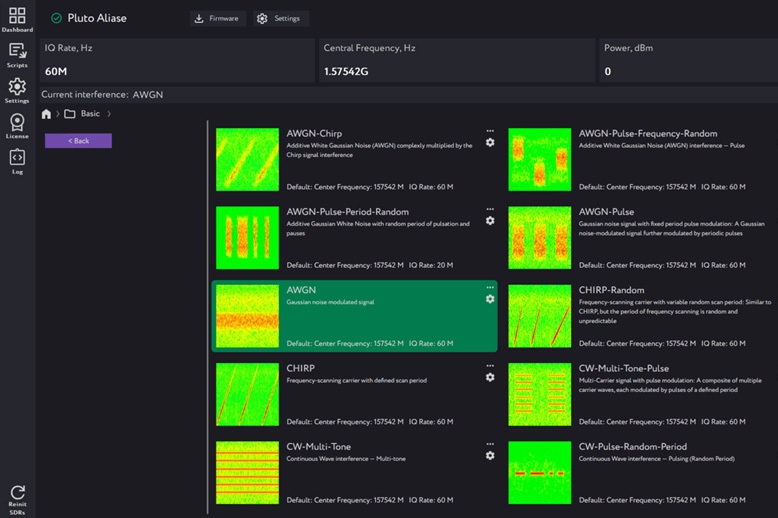
Multi-channel RF jammer simulator with open-source interference library. Enables the creation of complex interference modulations (clever jamming) to test the resilience of your communication and navigation systems. Compatible with Adalm Pluto SDRs.
GP-Simulator
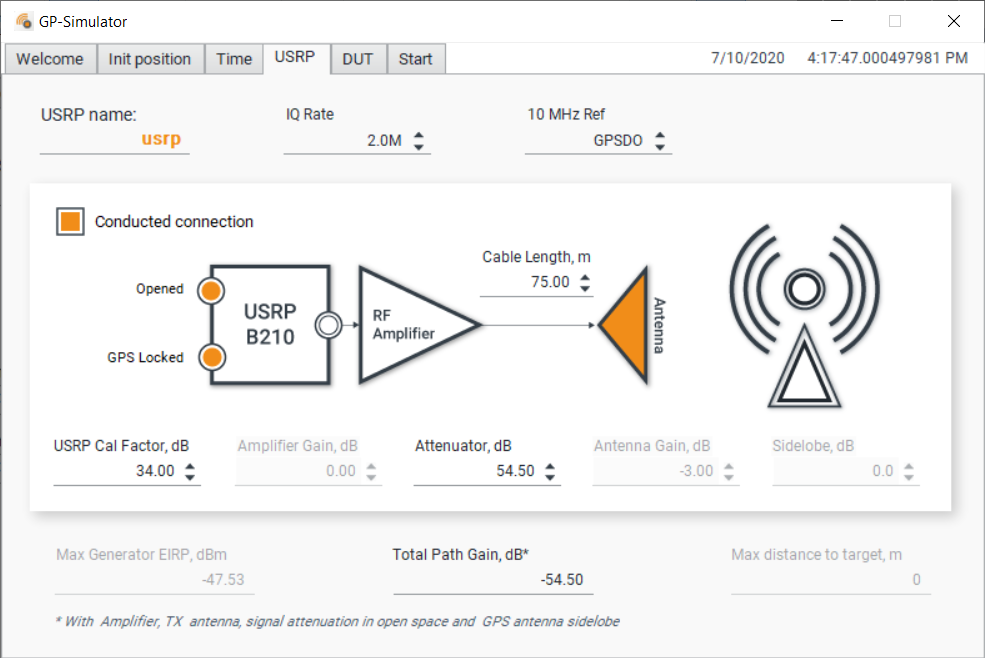
GPS simulator for spoofing vulnerability testing. Supports coherent spoofing scenarios, live sky and over-the-air operations. Easy-to-use solution not requiring advanced GNSS knowledge.
Why Multi-Channel Jammer Simulation is a Must-Have for Drone Testing
Modern drones rely on a variety of radio channels, each tailored to specific purposes such as navigation, control, telemetry, video transmission, or communication in drone swarms. These channels vary depending on the drone’s application, operational range, power requirements, and communication needs.
The key types include:
- Control Channels: Used for transmitting commands such as movement, altitude adjustments, and maneuvers.
- Frequencies: 2.4 GHz (primary), 900 MHz (long-range in some regions), 5.8 GHz.
- Protocols: PWM, SBUS, DSMX, and LoRa for low-power long-range communication.
- Video Transmission Channels: For streaming video from the drone’s camera to the operator.
- Frequencies: 5.8 GHz (primary), 1.3 GHz (long-range), and 6 GHz (emerging standards).
- Protocols: Analog (PAL/NTSC) and Digital (DJI OcuSync, HDZero) for high-quality, low-latency video.
- Telemetry Channels: Transmit vital drone data like altitude, speed, coordinates, and battery status.
- Frequencies: 433 MHz, 915 MHz, 2.4 GHz.
- Protocols: MAVLink, SmartPort, CRSF.
- Navigation Channels: Support GNSS systems such as GPS, Galileo, GLONASS, and BeiDou for accurate positioning.
- Frequencies: 1.2 GHz (L1), 1.5 GHz (L2), 1.1 GHz (L5).
- Additional: RTK (Real-Time Kinematics) for precision.
- Swarming Channels: Facilitate coordination among multiple drones in military or industrial tasks.
- Frequencies: 900 MHz, 2.4 GHz.
- Protocols: Wi-Fi Ad-hoc, Zigbee, Bluetooth Mesh, LoRa Mesh networks.
- FPV (First-Person View) Channels: Enable real-time visual piloting.
- Frequencies: 5.8 GHz (primary), 1.3 GHz, 2.4 GHz.
- Designed for low-latency video transmission.
- Internet Connectivity Channels: Used for cloud-based tasks or remote control over the internet.
- Technologies: LTE/4G, 5G.
- Anti-Interference Channels: Enhance resistance to jamming and unauthorized control capture.
- Technologies: Frequency Hopping, Encryption (AES-256), and Narrowband Communication.
Given this complexity, testing each of these communication types under interference conditions is essential for ensuring drones’ operational reliability.
The Role of Multi-Channel Jammer Simulation
The GP-Jammer is a powerful solution for advanced multi-channel interference simulation, enabling comprehensive testing of drones across a wide range of radio frequencies and signal types. Unlike single-channel systems, the GP-Jammer provides the flexibility and precision needed to replicate complex real-world scenarios, such as simultaneous jamming of GNSS signals (L1, L2, L5), control frequencies, and telemetry links.
Key Specifications of the GP-Jammer
| Parameter | Details |
|---|---|
| Supported SDR | Adalm Pluto SDR with custom firmware |
| Number of TX Channels | Unlimited, based on the license |
| RF Signal Modulation Types | Only limited by your imagination and Python skills. Create custom modulations using an open-source Python library. |
| RF Signal Playback Method | Adalm Pluto SDR synthesizes RF signals by continuously playing preloaded IQ data generated via Python and saved as .iq files. This approach eliminates the need for real-time streaming, reducing system load. |
| Adjustable Parameters | Output Power, IQ Rate, Central Frequency |
| Frequency Range | 70 MHz to 6 GHz |
| Maximum IQ Rate | 56 MSPS |
| Maximum Output Power | 7 dBm. Unlimited with external RF power amplifier |
| Dynamic Output Power Range | 80 dB |
By supporting multiple transmission channels, customizable RF signals, and precise control over output parameters, the GP-Jammer enables engineers and researchers to simulate real-world jamming scenarios with exceptional accuracy. This makes it an essential tool for testing and improving the resilience of drone systems in today’s increasingly complex operational environments.
Advanced Modulation Capabilities of the GP-Jammer
The GP-Jammer supports a wide array of sophisticated modulation techniques, providing unparalleled flexibility for replicating complex jamming scenarios. Its advanced interference library, built on a fully open-source Python framework, allows users to analyze, customize, and edit modulation patterns to suit specific testing needs. This adaptability empowers researchers to develop interference scenarios that reflect the evolving sophistication of real-world jamming threats.

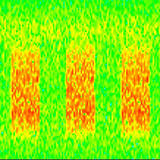
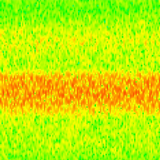
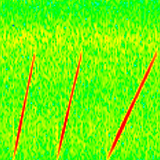

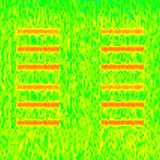
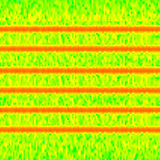
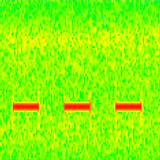

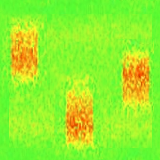
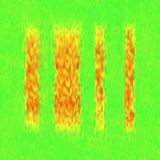

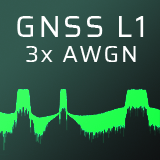

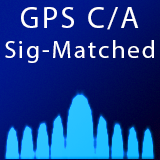
Why Advanced Modulations Are Essential
The current landscape of drone technology is a battleground between two opposing forces: developers of anti-drone systems and engineers advancing interference-resistant control and navigation systems. Anti-drone technologies are becoming increasingly sophisticated, employing complex modulation techniques to disrupt critical channels such as GNSS (L1, L2, L5) and control links. These advancements necessitate proactive testing to ensure drone systems are prepared for the next generation of threats.

GP-Simulator: The Perfect Tool for Spoofing Vulnerability Testing
The GP-Simulator is an SDR-based GPS simulator designed to test and analyze vulnerabilities in GNSS systems against spoofing attacks. It supports live sky and over-the-air testing, making it an easy-to-use and highly versatile solution for researchers, cybersecurity specialists, and drone developers. Importantly, it does not require advanced GNSS knowledge, providing a user-friendly experience for a wide range of professionals.
Key Features of the GP-Simulator
The GP-Simulator is tailored for realistic and effective spoofing tests, with features that enhance its usability and scope:
- Live Sky Spoofing: Enables testing in realistic, live sky environments, simulating real-world spoofing scenarios outside of controlled lab conditions.
- Over-the-Air Testing: Configures signal transmission over the air, accounting for TX/RX antennas, RF amplifiers, cables, and distance to the device under test—ideal for drone testing.
- Coherent Spoofing Scenarios: Supports advanced synchronous spoofing, where fake signals perfectly mimic real ones, causing attacked receivers to switch seamlessly without losing tracking.
- Real-Time Manipulation: Allows distortion of timestamps, coordinates, PPS phases, and individual satellite parameters in real time to replicate precise attack conditions.
- True Almanac and Ephemeris: Uses genuine data files from NASA to bypass basic spoofing protections in GNSS receivers, ensuring realistic and challenging test environments.
- Easy-to-Use Interface: Designed for ease of use by cybersecurity professionals, with online training available for testing drones, time servers, RTK base stations, and other GNSS-dependent systems.
Why Combining GP-Jammer and GP-Simulator Expands Your Testing Capabilities
Drone attack scenarios are becoming increasingly complex, often involving a combination of spoofing and jamming to compromise navigation and control systems simultaneously. Using the GP-Jammer and GP-Simulator together significantly enhances your testing capabilities, enabling the simulation of hybrid attacks that reflect real-world threats. This powerful combination allows you to:
- Test how drones respond to simultaneous interference and spoofing.
- Explore vulnerabilities in both GNSS and control channels under combined stress.
- Develop and validate robust countermeasures for complex, multi-layered attacks.
The GP-Simulator complements the GP-Jammer by adding a layer of spoofing-focused testing, enabling a holistic approach to resilience testing. Together, they provide unmatched flexibility and precision, ensuring that your systems can withstand even the most sophisticated attack scenarios.
The GP-Simulator, with its live sky testing and real-time signal manipulation capabilities, is a must-have for testing the security and reliability of drones, self-driving vehicles, and other GNSS-reliant systems. Its seamless integration with the GP-Jammer provides a comprehensive solution for engineers and researchers focused on advancing system resilience.
Why Choose GPSPATRON?
With GPSPatron’s GP-Jammer and GP-Simulator, engineers gain access to cutting-edge technology for:
- Testing the resilience of GNSS and communication systems.
- Simulating advanced jamming threats in a controlled, repeatable environment.
- Pushing the boundaries of drone security and reliability.
By integrating these tools into your testing workflow, you ensure that your drones remain operational in the harshest interference conditions. Whether you’re developing drones for commercial, industrial, or defense applications, GPSPatron provides the solutions to meet your testing needs.
Book a demo today and experience the full capabilities of the GP-Jammer and GP-Simulator. See how it can revolutionize your testing process and provide the insights needed to stay ahead of the competition. Contact us now to schedule your session:
